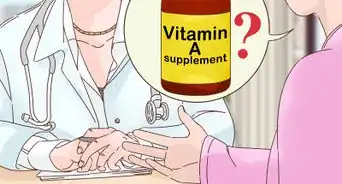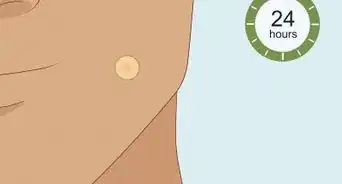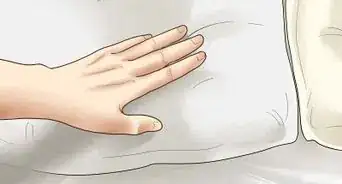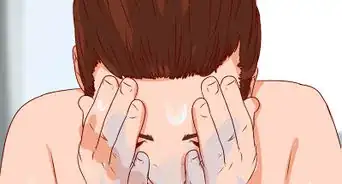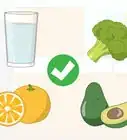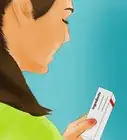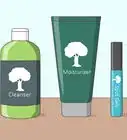This article was medically reviewed by Shari Forschen, NP, MA. Shari Forschen is a Registered Nurse at Sanford Health in North Dakota. Shari has worked in healthcare since 1996 and her expertise lies in acute care bedside nursing on a medical oncology floor. She received her degree from Medcenter one College of Nursing in 2003 and her Family Nurse Practitioner Masters from the University of North Dakota in 2014. Shari is a member of the American Nurses Association.
wikiHow marks an article as reader-approved once it receives enough positive feedback. In this case, 95% of readers who voted found the article helpful, earning it our reader-approved status.
This article has been viewed 774,578 times.
An acne tool (also known as a blackhead or comedone extractor), is a tool used to remove whitehead and blackhead pimples. Comedone extractors are small tools that usually resemble small rods and have loops attached to either end or contain sharp lancets; they are designed to pull out the core of the pimple without damaging your skin. Before using an acne tool (a comedone extractor), certain preparation is required to prevent further skin blemishes or infection.
Steps
Disinfecting Your Face
-
1Develop a good face cleansing routine. Washing your face twice daily is the most important thing you can do to get clean, clear skin. If you plan to use an acne removing tool, then wash your face right before you use it to ensure that your skin is clean.
- Make sure that you wash your face in the morning, before you go to bed at night, and any time your face gets sweaty.
- Use a gentle cleanser and lukewarm water to wash your face. Avoid harsh, exfoliating cleanser. Using exfoliating cleansers and scrubbing your face can irritate your skin and cause redness and inflammation.[1]
- Do not scrub your face. Just use your fingertips or a gentle cotton washcloth to gently massage the cleanser into your skin. Then, splash water on your face to wash the cleanser away.
- Pat your face dry with a towel after you finish washing it.
-
2Open your skin pores. Softening your acne and pimples will make them easier to remove when the pores are opened before using an acne tool. Pores can be opened by placing a hot, wet towel over your face for 2 to 3 minutes or by taking a hot shower. You can also use a steam treatment on your face to open the pores. However, be careful when using this method because you can burn your skin if the water is too hot.[2]Advertisement
-
3Disinfect your hands or wear gloves. To prevent bacteria on your hands from coming into contact with your face, disinfect your hands by washing them with antibacterial soap and water. Alternatively, you can wear disposable gloves when using the acne tool.
- Disinfecting your hands will help to prevent infection. This is key especially with acne because the presence of bacteria worsens pimples over time.
- Therefore, your level of success in clearing up acne will relate to your level of cleanliness and hygiene.
-
4Sterilize your acne.[3] Prior to using an acne tool, you will want to disinfect the pimples themselves so that bacteria does not inadvertently get pushed further into your pores. Use rubbing alcohol pads over the areas you want to treat to sterilize on your face before using the acne tool.
- Also sterilize the acne tool (comedone extractor). If your tool is not sterilized, then you may end up introducing more bacteria to your face.
- Use rubbing alcohol on a cotton swab to sterilize your tool prior to using it.
Using the Acne Tool
-
1Select the right extracting tool for your acne.[4] Blackheads should be removed with comedone extractors, whereas whiteheads will need to be pierced with a sharp lancet first before removing them with an extractor. The most common acne tool used is a comedone extractor with two ends, each of a different size. You can then pick the size that is most appropriate to the size of the blackhead you are extracting from your face.
- While another option is an acne tool where one side is a blackhead remover, and the other side is a sharp lancet to pop open whiteheads prior to removing them, this takes more skill to use. Keep in mind that it is best to avoid popping whiteheads due to the risk of infection. If you have many whiteheads, then see a dermatologist.
- If you are inexperienced at popping whiteheads with a sharp lancet, your best bet may be to get this done by a professional dermatologist (skin specialist) or aesthetician.
- If you use the lancet improperly, it may result in scarring or other damage to your face. On the other hand, the side of the tool used for blackheads is much safer and can be used at home.
-
2Remove your blackheads with the comedone extractor.[5] You can remove blackheads by centering the loop of the comedone extractor over the pimple you want to remove, and rocking the tool gently from side to side while applying slight pressure. The blackhead in its entirety will be pulled from the follicle and you will see oil ooze from the pore.
- If the blackhead does not come out with gentle pressure, then do not try to force it. This can lead to an infection and scarring. See a dermatologist if you have a severe blackhead that you cannot remove easily.
-
3Remove whiteheads if you are experienced using a lancet.[6] To remove whiteheads, you will need to start by piercing the whitehead with the lancet to break it open. Once the whitehead is broken open, you will want to centre it within the loop of the comedone extractor and rock the tool gently from side to side, again applying slight pressure until it is pulled from the follicle.
- If you have any reservations about using the lancet, it is worthwhile investing in seeing either a dermatologist or an aesthetician who is experienced in this area. That way, you will avoid errors that could lead to scarring.
-
4Treat any bleeding. In some cases, your skin may bleed slightly after using the comedone extractor. Lightly pat your skin with gauze to absorb any blood. If done correctly, the bleeding should not last more than a few moments. However, you might have to apply firm pressure for a few seconds or until the bleeding stops.
-
5Finish by disinfecting the treated area.[7] To be extra cautious about preventing infection, use additional rubbing alcohol pads to clean your now acne-free skin. You should also clean and disinfect your acne tool before putting it away. Remember that an extra effort toward good hygiene and cleanliness will optimize your success at treating your acne.
Expert Q&A
Did you know you can get expert answers for this article?
Unlock expert answers by supporting wikiHow
-
QuestionIs it normal if there is reddish swelling in place of the pimple for some time?
 Shari Forschen, NP, MAShari Forschen is a Registered Nurse at Sanford Health in North Dakota. Shari has worked in healthcare since 1996 and her expertise lies in acute care bedside nursing on a medical oncology floor. She received her degree from Medcenter one College of Nursing in 2003 and her Family Nurse Practitioner Masters from the University of North Dakota in 2014. Shari is a member of the American Nurses Association.
Shari Forschen, NP, MAShari Forschen is a Registered Nurse at Sanford Health in North Dakota. Shari has worked in healthcare since 1996 and her expertise lies in acute care bedside nursing on a medical oncology floor. She received her degree from Medcenter one College of Nursing in 2003 and her Family Nurse Practitioner Masters from the University of North Dakota in 2014. Shari is a member of the American Nurses Association.
Master's Degree, Nursing, University of North Dakota
-
QuestionSo , do you wash your face first?
 Shari Forschen, NP, MAShari Forschen is a Registered Nurse at Sanford Health in North Dakota. Shari has worked in healthcare since 1996 and her expertise lies in acute care bedside nursing on a medical oncology floor. She received her degree from Medcenter one College of Nursing in 2003 and her Family Nurse Practitioner Masters from the University of North Dakota in 2014. Shari is a member of the American Nurses Association.
Shari Forschen, NP, MAShari Forschen is a Registered Nurse at Sanford Health in North Dakota. Shari has worked in healthcare since 1996 and her expertise lies in acute care bedside nursing on a medical oncology floor. She received her degree from Medcenter one College of Nursing in 2003 and her Family Nurse Practitioner Masters from the University of North Dakota in 2014. Shari is a member of the American Nurses Association.
Master's Degree, Nursing, University of North Dakota
-
QuestionDo these tools work effectively for cystic acne?
 Shari Forschen, NP, MAShari Forschen is a Registered Nurse at Sanford Health in North Dakota. Shari has worked in healthcare since 1996 and her expertise lies in acute care bedside nursing on a medical oncology floor. She received her degree from Medcenter one College of Nursing in 2003 and her Family Nurse Practitioner Masters from the University of North Dakota in 2014. Shari is a member of the American Nurses Association.
Shari Forschen, NP, MAShari Forschen is a Registered Nurse at Sanford Health in North Dakota. Shari has worked in healthcare since 1996 and her expertise lies in acute care bedside nursing on a medical oncology floor. She received her degree from Medcenter one College of Nursing in 2003 and her Family Nurse Practitioner Masters from the University of North Dakota in 2014. Shari is a member of the American Nurses Association.
Master's Degree, Nursing, University of North Dakota
Warnings
- Never use your fingers to remove acne or pimples. Using your fingers may cause inflammation or infection and will usually cause the pimple to emit pus.⧼thumbs_response⧽
References
- ↑ http://www.nursingcenter.com/pdfjournal?AID=1603370&an=00006205-201310000-00006&Journal_ID=54012&Issue_ID=1603254
- ↑ https://www.insider.com/everything-you-should-know-about-pores-myths-2019-5
- ↑ http://www.thedermreview.com/blackhead-extractor/
- ↑ http://www.thedermreview.com/blackhead-extractor/
- ↑ http://www.thedermreview.com/blackhead-extractor/
- ↑ http://www.everydayhealth.com/acne/acne-extraction.aspx
- ↑ http://www.thedermreview.com/blackhead-extractor/
About This Article
To use an acne tool, start by washing your face with a gentle cleanser. You can remove blackheads by centering the loop of a comedone extractor over the pimple, then rocking the tool gently from side to side while applying slight pressure. To remove whiteheads, pierce the whitehead with a lancet, then center it within the loop of the comedone extractor and rock the tool from side to side. Finish up by disinfecting your skin and acne tool with rubbing alcohol! For tips on developing a good skin cleansing routine, read on!
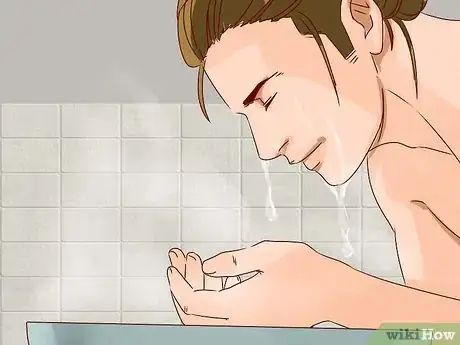

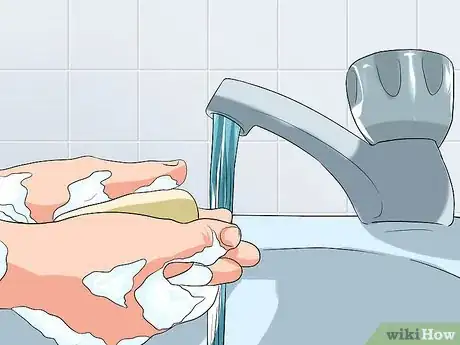

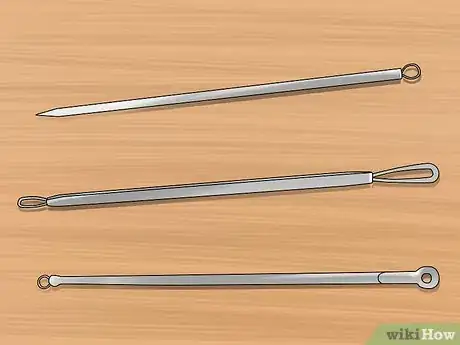
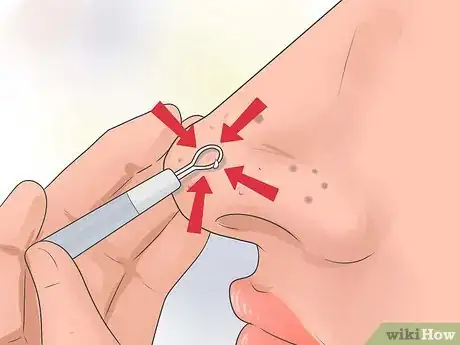
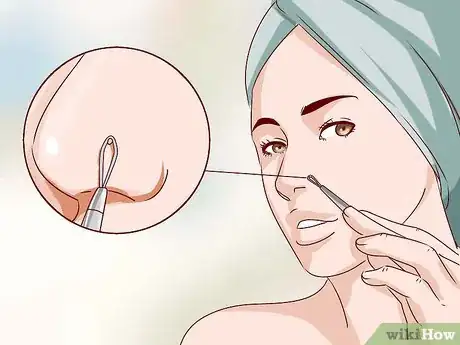

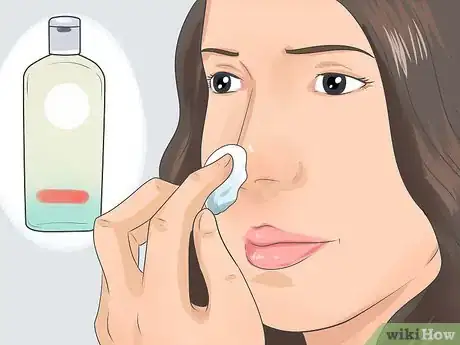
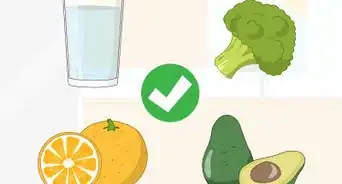
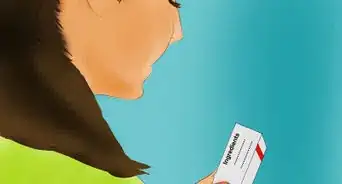


-Step-8-Version-2.webp)
